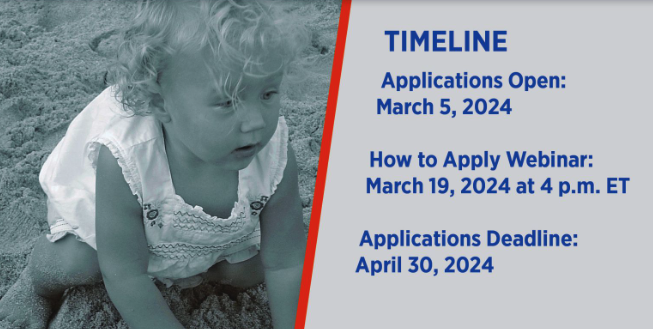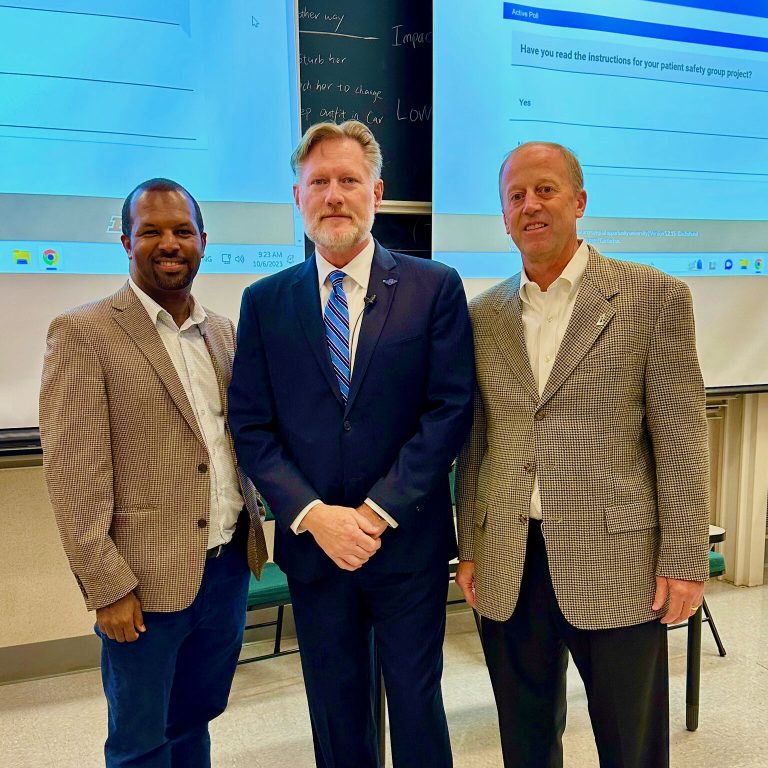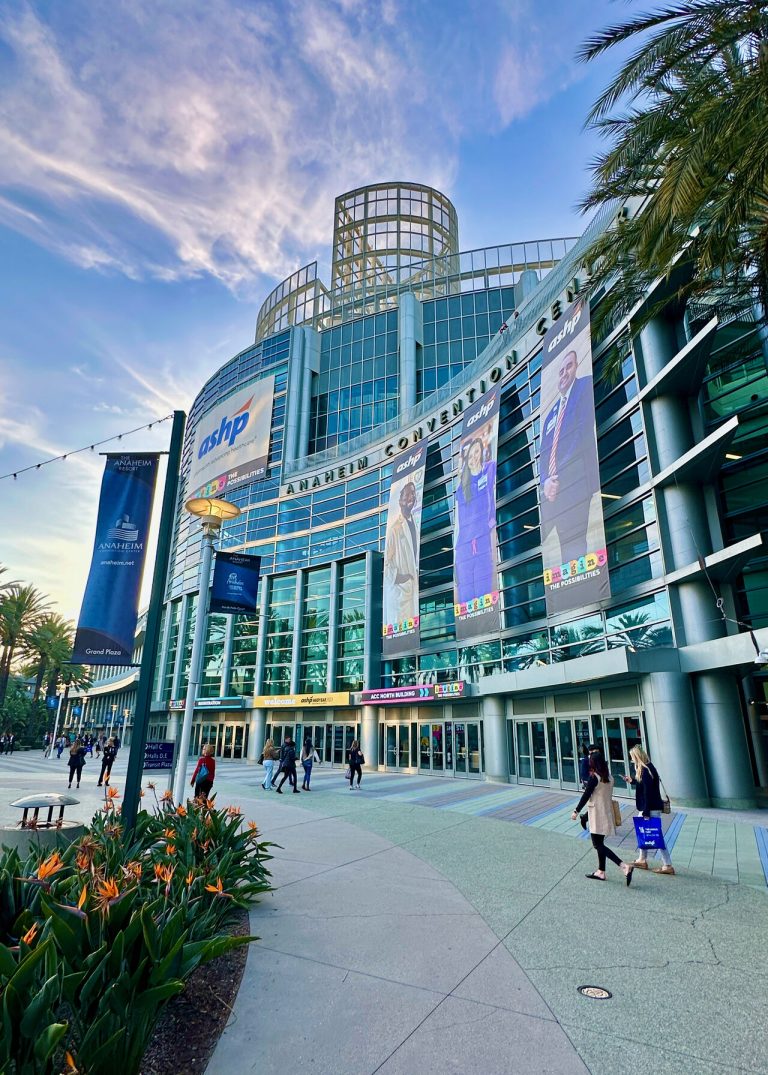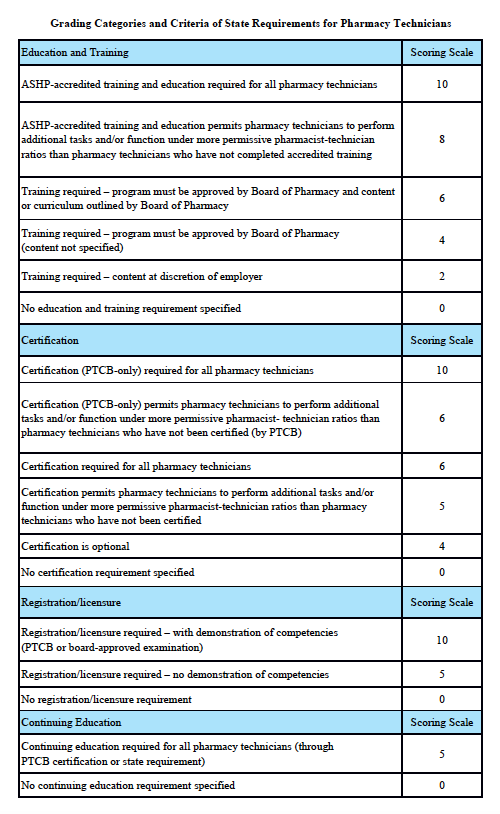
Second Academic Year for Medication Safety Scholars Program
March 22, 2024
Really excited to share the news that we will be beginning the second academic year for the Emily Jerry Foundation‘s Medication Safety Scholars Program! This comprehensive distance education and virtual engagement program was developed and successfully implemented over the… Read More



District of Columbia Scorecard
Grading Scale:
A – 85-100%, B – 70-84.9%, C – 55-69.9%, D – 40-54.9%, F – 0-39.9%
Grading Categories & Criteria

District of Columbia Law
I. Laws
No formal language regarding pharmacy technicians
II. Regulations
1916.9 Remote automated pharmacy
1917.8 Telepharmacy
1920.5
1999 DEFINITIONS
1916.9 Remote automated pharmacy
Non-sterile drugs which require reconstitution through the addition of a specified amount of water may be dispensed by the remote site only if a registered pharmacy technician or an authorized licensed healthcare provider reconstitutes the product.
1917.8 Telepharmacy
Nonsterile drugs which require reconstitution through the addition of a specified amount of water may be dispensed by the remote site only if a registered pharmacy technician or an authorized licensed healthcare provider reconstitutes the product.
1920.5
The pharmacist-in-charge or proprietor of a pharmacy shall assure the development and implementation of written policies and procedures to specify the duties to be performed by pharmacy interns and pharmacy technicians. The duties and responsibilities of these personnel shall be consistent with their training and experience. These policies and procedures shall, at a minimum:
(a) Specify that pharmacy interns and pharmacy technicians are to be personally and directly supervised by a pharmacist stationed within the same work area who has the ability to control and who is responsible for the activities of the pharmacy interns and pharmacy technicians; and
(b) Specify that pharmacy interns and pharmacy technicians shall not be assigned duties that may be performed only by a pharmacist, which shall include but not be limited to:
(1) Drug utilization review;
(2) Clinical conflict resolution;
(3) Prescriber contact concerning prescription drug order clarification;
(4) Patient counseling on prescription, over-the-counter, and herbal products;
(5) Dispensing process validation;
(6) Receiving new oral prescription drug orders, or refill authorizations;
(7) Prescription transfers; and
(8) Independent compounding.
1999 DEFINITIONS
Pharmacy technician—an individual employed by a pharmacy who possesses appropriate education, training, and experience to assist in the practice of pharmacy, under the direct supervision of a pharmacist, by assisting in the technical services of preparing pharmaceuticals for final dispensing by a pharmacist.
References
District of Columbia Municipal Regulations Chap 19 Title 12
http://hpla.doh.dc.gov/hpla/frames.asp?doc=/hpla/lib/hpla/pharmacy/101112chapter_19_pharmacies.pdf
The data contained in this 2012 Annual Scorecard are accurate as of December 2012 . Because statutes and regulations are continually revised, the data are subject to change. These data have been verified with the state board of pharmacy. This scorecard is updated on an annual basis in order to incorporate statutory and regulatory changes. A new scorecard will be issued in July 2013.
Scoring rationale for Education and Training:
In order to protect the public and help ensure patient safety, it is important that pharmacy technicians are properly educated and trained. The most rigorous training is accredited training. The sole entity empowered to accredit pharmacy-technician training programs is the American Society of Health-System Pharmacists (ASHP). Please note that this is “programmatic accreditation” – not “institutional accreditation.” It is the content of the training program – as measured against established standards – that is being evaluated and accredited. Accredited training is vital to protecting patient safety because it means that a pharmacy-technician training program has met established quality standards to provide assurance and confidence to the public. For more information, please see http://www.ashp.org/menu/Accreditation/TechnicianAccreditation.aspx.
Scoring rationale for Certification:
Certification is the process by which a nongovernmental agency or association grants recognition to an individual who has met certain predetermined qualifications specified by that agency or association. This is often determined by an examination process. Numerous organizations have recommended that the certification exam conducted by the Pharmacy Technician Certification Board (PTCB) should be recognized as the sole, nationally-accredited certification exam for pharmacy technician certification – including the National Association of Boards of Pharmacy (NABP), the Texas State Board of Pharmacy (TSBP), and the U.S. Department of Veterans Affairs (VA). In a recent report, NABP recommended that states be encouraged to “recognize certification by the Pharmacy Technician Certification Board (PTCB).” Moreover, NABP performed a psychometric audit of the PTCB’s pharmacy technician certification examination (PTCE) in 2001 and determined that the PTCE is psychometrically sound, defensible, and valid. In May 2010, the TSBP awarded the PTCB with the Pharmacy Technician Certification Provider contract in Texas. PTCB was selected for the contract after a rigorous bidding and evaluation process that included formal reviews and evaluations from three independent psychometricians. TSBP confidently recognizes PTCB as the single provider of certification examinations for pharmacy technicians. In addition, in June 2010, the VA began requiring PTCB certification for VA pharmacy technicians employed at grade GS-6 and above.
Scoring rationale for Registration/Licensure:
Registration/licensure is the process by which the state maintains a list of all pharmacy technicians in the state and grants permission for an individual to work as a pharmacy technician in the state based on the applicant’s completion of all pre-requisites to registration/licensure – such as required training and certification.
Scoring rationale for Continuing Education:
Continuing education enables pharmacy technicians to fulfill their professional responsibility to maintain competence and up-to-date knowledge and skills in an environment of technological advances and increasingly complex, new medications and therapies.
Our Mission
The Emily Jerry Foundation is determined to help make our nation’s, world renowned, medical facilities safer for everyone, beginning with our babies and children. We are accomplishing this very important objective by focusing on increasing public awareness of key patient safety related issues and identifying technology and best practices that are proven to minimize the “human error” component of medicine. Through our ongoing efforts The Emily Jerry Foundation is working hard to save lives every day.
Recent Posts
Archives